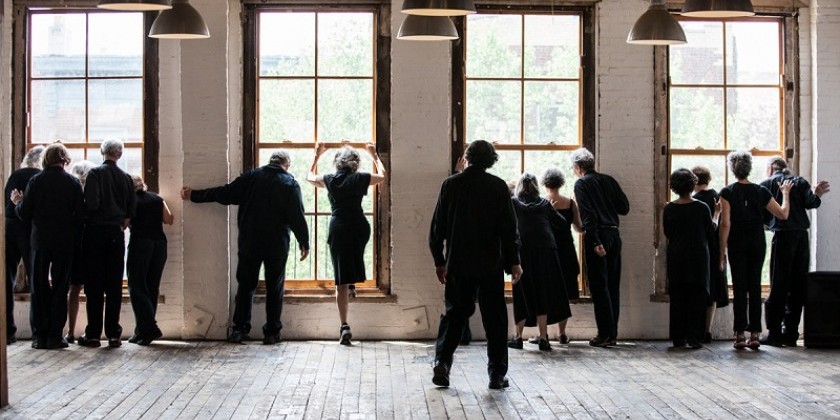Impressions of Thierry Thieû Niang’s “A Time for Spring”
Nearly 101 years ago, The Rite of Spring premiered to a riotous reception in Paris. Stravinsky’s angular score has since been recognized as one of the most pivotal works of the 20th century. Nijinsky’s choreography, however, was lost until Millicent Hodson reconstructed it in 1987 for The Joffrey Ballet. Over the years, it has become a rite of passage for emerging and established choreographers (the ranks include luminaries such as Pina Bausch, Mark Morris, and Bill T. Jones) to devise their own responses to Stravinsky’s challenging score. Thierry Thieû Niang - whose version, A Time for Spring, occurred at the Invisible Dog as part of DANSE : A French-American Festival of Performance and Ideas - takes an impressionistic approach to his offering.
The show opens with Stephen Greco reading aloud selections from Nijinsky’s diary. Nijinsky’s stupendous ego and crippling paranoia are in full display. Greco possesses a sonorous voice that stresses Nijinsky’s demanding, childlike desire to be taken seriously. His nonsensical yet poetical writing, which favors verbs formed from the infinitive to be, utilizes sentences heavy on repetition. “I am god.” and "Diaghilev is evil." reveal a man beset with terror that his own genius will be turned against him.
This solipsism stands in contrast to the communal feel of the dance portion. One by one, 20 senior citizens tread into the performing space. They arrange themselves in an artful clump as Ryan Frank walks in a large loop. After several warm up laps, Frank begins to sprint at a brisk tempo, a pace he will maintain for the piece’s entirety. His pathway, like an electron zinging around a nucleus’ hub, creates the illusion of an invisible and somewhat terrifying boundary.
Thieû Niang designs simple movements for his performers, none of whom are professional dancers. Faces etched with wrinkles and gravitas, they place their fingers over their heart, stretch their arms wide, and grip their heads. Sometimes, they plant a warm hand on a fellow performer’s back. Compassion, confusion, and compulsion : these are archetypal gestures that transcend age, race, creed, and nationality.
The 20 parade in loosely concentric circles suggestive of tree rings. Occasionally, the performers pause and stare off into space, eyes fixated on something we can’t quite fathom. Many strip off a shirt or jacket. A few even remove wigs, the lustrous hair of youth discarded for graying or balding crowns. Mostly though, they travel forward ; their pathway, though, is counterclockwise. Literally and figuratively, they race against time.
Stravinsky’s score — strident and roiling with emotional power — sounds unusually tame here. It could be the recording, which is tiny and lifeless. More likely, it is because the performers’ actions don’t accent the crashing chords or asynchronous cadences of Stravinsky’s composition. Their performative quality, which forgoes fervor for contemplation, renders the music into something akin to Muzak.
The original narrative of The Rite of Spring features a virgin sacrifice (she dances herself to death) in a pagan ceremony. Instead of sacrifice, the emphasis here is on the creation of community through shared space and ritual. In the end, when it’s their time, the cast wanders off, and only Frank remains, eternal in the circle of life.
Erin Bomboy - The dance Enthusiast - 19 mai 2014 / Photo Maria Baranova
Voir en ligne : Retrouvez cet article sur le site The dance Enthusiast

